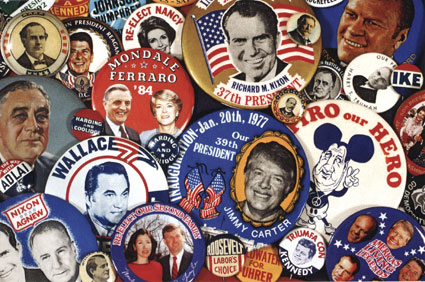
Voters are less opposed to the idea of having a non-believer, even an atheist, as a presidential candidate, according to a survey by Pew Research. The survey, released January 27, shows that the share of Americans who said they would be less likely to vote for an atheist is down from 61 percent in 2007 to 51 percent today. Previous Pew surveys found that 7 in 10 Americans said it was important that a president have strong religious beliefs. The new survey, conducted among 2,009 American adults, asked the somewhat different question of “How important is it to you to have a president who shares your religious beliefs?” That question turned up much smaller numbers, with 64 percent of Republicans and only 41 percent of Democrats saying it was very or somewhat important. The importance most Republicans attach to a candidate’s faith was more muted when it came to the candidacy of Donald Trump. Forty-one percent of Republicans see Trump as a potentially good, even great, president, even though they don’t think he’s particularly religious. Almost twice as many evangelicals agreed Trump would be a bad president compared to Ted Cruz and Ben Carson. For Democrats, almost half said Hillary Clinton is not a religious person, despite her public claim of being an active and lifelong Methodist.

The pay gap between men and women clergy is significantly wider than the national pay gap of 83 cents on the dollar, according to Tobin Grant in his Corner of Church and State blog (Jan. 12). National data on the clergy pay gap was unavailable until this year, when the Bureau of Labor Statistics reported the national median income for both male and female clergy (the Bureau had collected this data before but could not make reliable estimates of women because of their low number). The data shows that women clergy earns 76 cents for each dollar earned by male clergy. The gap for clergy is wider than it is for similar occupations, such as high school and college teachers (which are both close to the national average).

(Corner of Church and State, http://tobingrant.religionnews.com/)
On the disputed question of how many Muslims there are in the U.S., the Pew Research Center recently released estimates that there were about 3.3 million Muslims of all ages living in the country in 2015. This estimate means that Muslims made up about 1 percent of the total U.S. population (about 322 million people in 2015), but the Islamic population is likely to double by 2050. The new Pew estimate of Muslims is based on a demographic projection that models growth in the American Muslim population since a 2011 estimate and includes both adults and children. The projection was based on data on age, fertility, mortality, migration and religious switching drawn from multiple sources, including the 2011 survey of Muslim Americans. According to the current estimate, there are fewer Muslims of all ages in the U.S. than there are Jews by religion (5.7 million) but more than there are Hindus (2.1 million). Since 2007, there has been a steady growth in both the number of Muslims in the U.S. and the percentage of the U.S. population that is Muslim. Just over half of the projected growth of the American Muslim population from 2010 to 2015 is due to immigration.

Despite overwhelmingly positive coverage in the media, Pope Francis is drawing smaller crowds and “possibly alienating the base of traditional Catholics,” according to the newspaper Politico (Jan. 12). New figures published by the Vatican show that in 2015, more than 3.2 million pilgrims visited and attended papal events, liturgies or prayer services at the Holy See. That number is a sharp decline from the 5.9 million visitors Pope Francis received in 2014, and it was less than half of the 6.6 million pilgrims who visited the Vatican during Francis’s pontificate in 2013. While the Vatican attributed the dropping numbers to fears over terrorism, pope-watchers say another factor may be at work.

The popularity of Francis among the media and other outsiders, especially over his moderate stance on such issues as homosexuality and communion for the divorced, has alienated and caused suspicion among more devout Catholics. Vatican specialist Sandro Magister dismissed the terror threat argument, saying that weekly attendance at the pope’s general audiences were higher last December (44,000) after the Paris attacks than the year before (32,000). In turn, a Vatican spokesman cited a novelty effect, arguing that the latest numbers are in line with the attendance figures for conservative Pope Benedict—whose public attendance figures peaked at 3.2 million after his inaugural year in 2006.